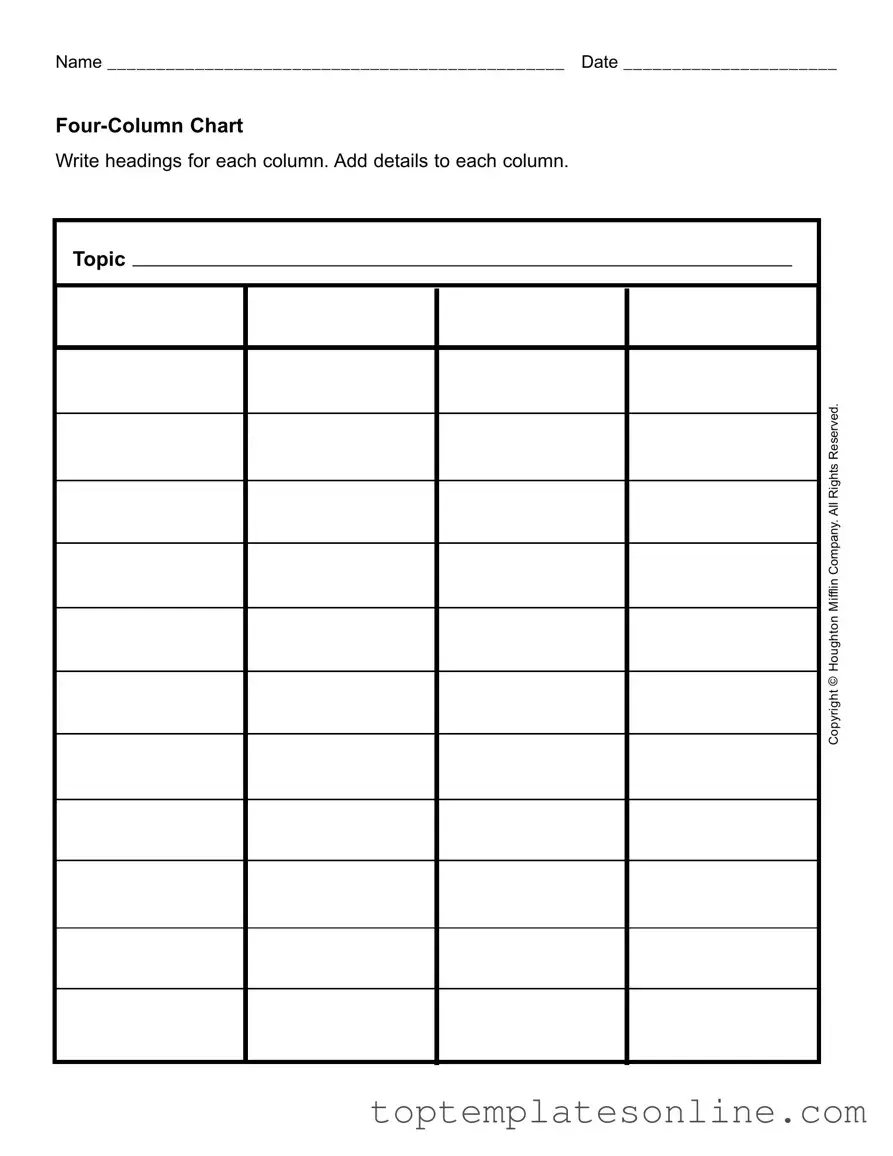The Four Column Chart form is a versatile tool designed to help individuals and teams organize information in a clear and structured manner. This form typically consists of four distinct columns, each serving a specific purpose in the documentation process. Users begin by writing headings for each column, which can be tailored to fit the topic at hand. In the case of the Mifflin Company, for example, the headings might pertain to different aspects of a project or analysis, allowing for a comprehensive view of the subject. Once the headings are established, details can be added to each column, facilitating a straightforward comparison or categorization of information. This format not only promotes clarity but also enhances communication among team members by providing a visual representation of data. The date and name fields included on the form ensure that each document is properly attributed and can be easily referenced in the future. By utilizing the Four Column Chart, individuals can streamline their thought processes and improve their overall productivity.
